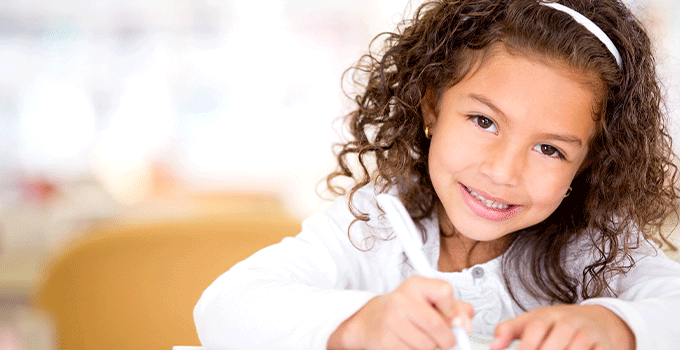
Recently, NPR ran a story detailing the “Russian Math” phenomenon — the growth of the Russian School of Mathematics from a kitchen-table passion project to a school that serves over 20,000 students across the country. But what is “Russian Math,” and how does it differ from other approaches?
“Russian Math” is built on the foundational principle that the cognitive ability of a child — the power to think and reason — is not predetermined at birth, but can actually be developed over time. And that math is by far the best tool for this development.
CURRICULUM
In a “Russian Math” curriculum — the first pillar of this approach — students are taught to think both on a concrete and abstract level, to employ reason, logic and utilize previous knowledge.
Take the problem below, for example, which students will encounter in our curriculum in the 2nd and 3rd grades.
Solve problems b and c using the result of problem a.
634 – 182 = 452
635 – 182 = ?
635 – 181 = ?
We do not expect the child to calculate the answers using specific quantities but rather to reason through the problems at an abstract level. The classroom conversation might go something like this…
Students will suggest different ways to find the answer; the teacher will then challenge them to compare the first and second examples and explore how the difference between them might lead to a different result. Eventually, mostly on their own, children will discover that:
b) 635 – 182 would equal 453, because you’re taking the same number away from a number that is one greater, leaving you with a difference that is one greater.
c) We just learned that 635 – 182 equal 453. Now 635 – 181 would equal 454, because you’re taking a number that is one less away from the same number, leaving you with a difference that is one greater.
The teacher will then help students express their thoughts through the language of algebra, replacing the numbers with symbols A and B, and rewriting example C) above as A – ( B -1 ) = ( A – B ) + 1.
These problems offer a glimpse into some of the main elements of the Russian Math curriculum:
- Rather than working with specific quantities, students use abstractions and explore the relationships between them, developing a language for this type of thinking process.
- Students learn not to fear something that looks difficult, or even impossible. They draw from their reasoning ability and problem-solving experience to navigate through problems.
- Students begin multi-step problems as early as 1st grade, learning to build on previous results to progress towards the solution.
Sufficient practice and repeated success with challenging yet accessible problems develop a mindset that is open for exploration and challenges. Over time, top scores on standardized tests and mathematical olympiads become a natural by-product. More importantly, math becomes a beautiful, exciting, and a fun tool that empowers the mind.
To learn more about the program,
please schedule free evaluation (949) 864-6592
missionviejo@russianschool.com
www.russianschool.com/mission-viejo


